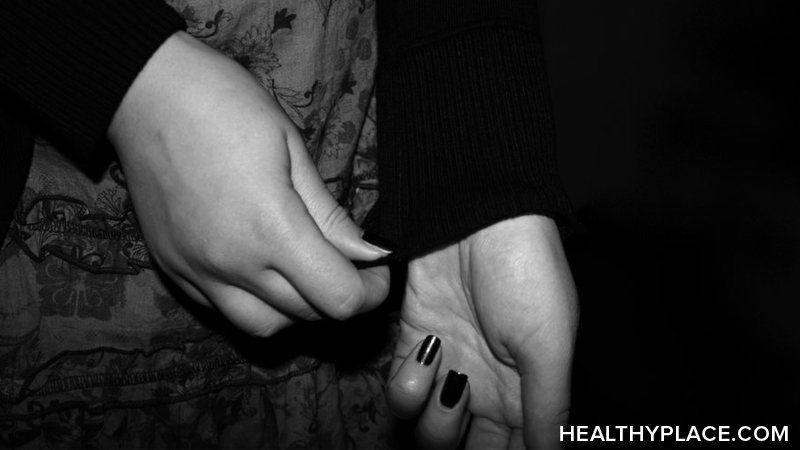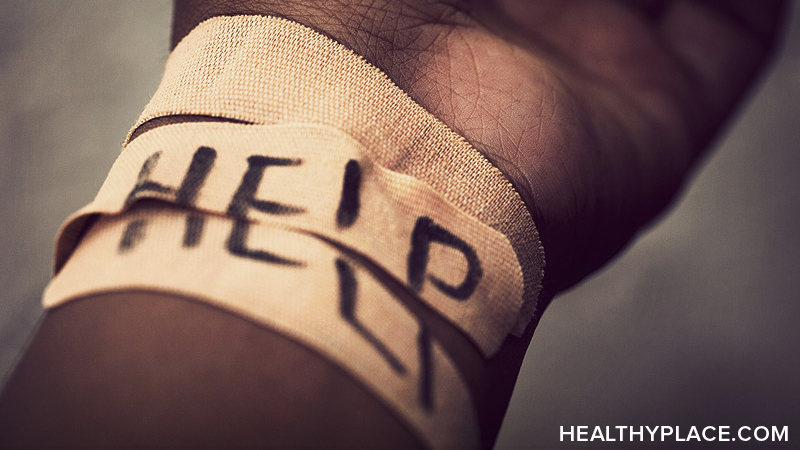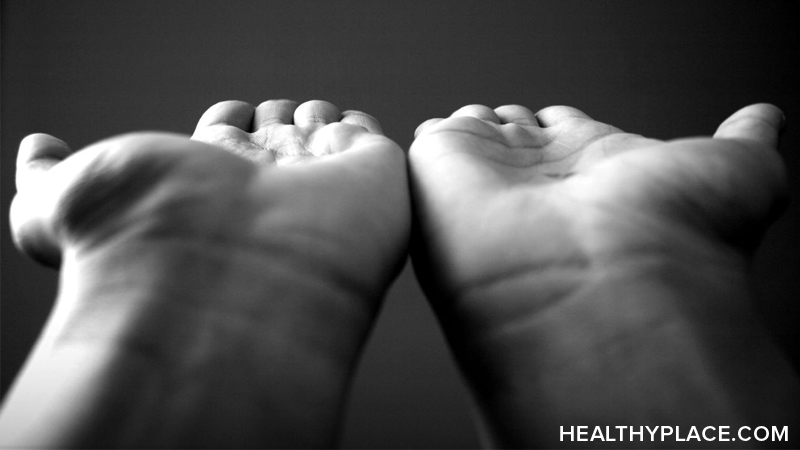Addictions Information
What is Addiction? Addiction Definition
1Wikipedia, Addiction: http://en.wikipedia.org/wiki/Addiction
2Medscape Reference, Opioid Abuse: http://emedicine.medscape.com/article/287790
3Medscape Reference, Psychiatric Illness Associated with Criminality: http://emedicine.medscape.com/article/294626Addictions Information
Types of Addiction: List of Addictions
1Wikipedia, Addiction: http://en.wikipedia.org/wiki/Addiction
2Medscape Reference, Psychiatric Illnesses Associated with Criminality: http://emedicine.medscape.com/article/294626
3Wikipedia, Behavioral Addiction: http://en.wikipedia.org/wiki/Behavioral_addiction
Addiction Symptoms: Signs of an Addict
1Indiana University, What are Addictive Behaviors? http://www.indiana.edu/~engs/hints/addictiveb.html
Causes of an Addiction
1AllPsych Online, Index of Psychiatric Disorders: http://allpsych.com/disorders/disorders_alpha.html
2Mayo Clinic, Drug Addiction: http://www.mayoclinic.com/health/drug-addiction/DS00183
3Wikipedia, Addictive Personality: http://en.wikipedia.org/wiki/Addictive_personality
4Medscape Reference, Opioid Abuse: http://emedicine.medscape.com/article/287790
5Indiana University, Why We Should Reject the Disease Concept of Alcoholism: http://www.indiana.edu/~engs/cbook/chap6.html
6National Institute on Drug Abuse, Addiction is a Chronic Disease: http://archives.drugabuse.gov/about/welcome/aboutdrugabuse/chronicdisease/
Addiction Treatment: Addiction Therapy, Addiction Rehab
1National Institute on Drug Abuse, NIDA InfoFacts: Treatment Approaches for Drug Addiction: http://drugabuse.gov/infofacts/treatmeth.html
2National Institute on Drug Abuse, Addiction is a Chronic Disease: http://archives.drugabuse.gov/about/welcome/aboutdrugabuse/chronicdisease
Addiction Facts and Statistics
1Medscape Reference, Alcoholism: http://emedicine.medscape.com/article/285913
2Medscape Reference, Nicotine Addiction: http://emedicine.medscape.com/article/287555
3National Institute on Drug Abuse, Trends in Drug Abuse: http://archives.drugabuse.gov/about/welcome/aboutdrugabuse/trends
4Medscape Reference, Psychiatric Illness Associated with Criminology: http://emedicine.medscape.com/article/294626
Alcoholism
i No listed author, Alcoholism Mayo Clinic. May 6, 2010. http://www.mayoclinic.com/health/alcoholism/DS00340
ii No listed author, Alcohol Consumption More Detrimental To Women Medical News Today. May 7, 2007. http://www.medicalnewstoday.com/articles/70062.php
iii Smith, Melinda M.A., Robinson, Lawrence, Segal, Jeanne Ph.D., Alcoholism and Alcohol Abuse HelpGuide.org. Accessed Jan. 21, 2011. http://helpguide.org/mental/alcohol_abuse_alcoholism_signs_effects_treatment.htm
iv Division of Adult and Community Health, National Center for Chronic Disease Prevention and Health Promotion, Alcohol and Public Health - Fact Sheet Centers for Disease Control and Protection. Dec. 17, 2010. http://www.cdc.gov/alcohol/fact-sheets/binge-drinking.htm
v Division of Adult and Community Health, National Center for Chronic Disease Prevention and Health Promotion, Alcohol and Public Health - Fact Sheet- Binge Drinking Centers for Disease Control and Protection. Jul. 10, 2010. http://www.cdc.gov/alcohol/fact-sheets/alcohol-use.htm
vi No listed author, Statistics Students Against Destructive Decisions. Jan. 2011 http://www.sadd.org/stats.htm
vii Division of Adult and Community Health, National Center for Chronic Disease Prevention and Health Promotion, Alcohol and Public Health - Fact Sheet - Underage Drinking Centers for Disease Control and Protection. Jul. 20, 2010. http://www.cdc.gov/alcohol/fact-sheets/underage-drinking.htm
viii New York State Office of Alcoholism and Substance Abuse Services, Warning Signs of Alcohol and Substance Abuse Connecticut Clearinghouse 2001. http://www.ctclearinghouse.org/topics/customer-files/Warning-Signs-of-Alcohol-and-Substance-Abuse.pdf
ix National Institute on Alcohol Abuse and Alcoholism, Moderate Drinking About.com. Accessed Jan. 22 2011. http://alcoholism.about.com/cs/basics/l/blnaa16.htm
x Smith, Melinda M.A., Saisan, Joanna MSW, Segal, Jeanne Ph.D Alcohol Addiction Treatment and Self-Help HelpGuide.org. Feb. 2010. http://helpguide.org/mental/alcohol_abuse_alcoholism_help_treatment_prevention.htm
xi None listed, Short-term effects of alcohol Wikipedia. Accessed Jan. 24 2011 http://en.wikipedia.org/wiki/Short-term_effects_of_alcohol
xii None listed, Long-term effects of alcohol Wikipedia. Accessed Jan 24. 2011 http://en.wikipedia.org/wiki/Long-term_effects_of_alcohol
xiiiNone listed, Alcohol's Damaging Effects on the Brain National Institute of Alcohol Abuse and Alcoholism. Oct. 2004. http://pubs.niaaa.nih.gov/publications/aa63/aa63.htm
xiv None listed, Alcohol withdrawal syndrome Wikipedia. Accessed Jan. 24, 2011. http://en.wikipedia.org/wiki/Alcohol_withdrawal_syndrome
xv None listed, Alcohol detoxification Wikipedia. Accessed Jan. 24, 2011. http://en.wikipedia.org/wiki/Alcohol_detoxification
xvi Saunders, J.B., and Aasland, O.G. WHO Collaborative Project on the Identification and Treatment of Persons with Harmful Alcohol Consumption. Report on Phase I: Development of a Screening Instrument. Geneva, Switzerland: World Health Organization, 1987.
xvii Saunders, J.B.; Aasland, O.G.; Babor, T.F.; et al. Development of the Alcohol Use Disorders Identification Test (AUDIT): WHO Collaborative Project on Early Detection of Persons with Harmful Alcohol Consumption—II. Addiction 1993, 88(6):791-804.
Cocaine
What is Cocaine? Cocaine Facts
1eMedicine, Neurologic Effects of Cocaine: http://emedicine.medscape.com/article/1174408-overview
2Wikipedia, Cocaine Dependence: http://en.wikipedia.org/wiki/Cocaine_dependence
3Wikipedia, Cocaine: http://en.wikipedia.org/wiki/Cocaine#Consumption
Cocaine Dependence and Is Cocaine Addictive?
1eMedicine Substance Abuse, Cocaine: http://emedicine.medscape.com/article/917385-overview
2eMedicineHealth Cocaine Abuse: http://www.emedicinehealth.com/cocaine_abuse/article_em.htm
3Wikipedia Cocaine Dependence: http://en.wikipedia.org/wiki/Cocaine_dependence
4eMedicineHealth: Addiction http://www.emedicinehealth.com/addiction/article_em.htm
5eMedicine Cocaine-Related Psychiatric Disorders: http://emedicine.medscape.com/article/290195-overview
Cocaine Addiction and Cocaine Addicts
1Wikipedia, Cocaine: http://en.wikipedia.org/wiki/Cocaine#Consumption
2eMedicine, Neurologic Effects of Cocaine: http://emedicine.medscape.com/article/1174408-overview
3Mayo Clinic, Drug Addiction: http://www.mayoclinic.com/health/drug-addiction/DS00183
Cocaine Use: Signs, Symptoms of Cocaine Use and Addiction
1Helpguide.org: Drug Abuse and Addiction: http://helpguide.org/mental/drug_substance_abuse_addiction_signs_effects_treatment.htm
2eMedicineHealth: Cocaine Abuse: http://www.emedicinehealth.com/cocaine_abuse/article_em.htm
Cocaine Effects, Cocaine Side Effects
1eMedicine, Neurologic Effects of Cocaine: http://emedicine.medscape.com/article/1174408-overview
2eMedicineHealth, Cocaine Abuse: http://www.emedicinehealth.com/cocaine_abuse/article_em.htm
Cocaine Abuse, Cocaine Overdose
1Mayo Clinic, Drug Addiction: http://www.mayoclinic.com/health/drug-addiction/DS00183
2Cocaine Rehab | Treatment, Signs of Cocaine Overdose http://www.cocainerehabtreatment.com/cocaine-overdose-signs
Cocaine Withdrawal and Managing Cocaine Withdrawal Symptoms
1PubMed Health, Cocaine Withdrawal: http://www.ncbi.nlm.nih.gov/pubmedhealth/PMH0001943/
2eMedicine, Neurologic Effects of Cocaine: http://emedicine.medscape.com/article/1174408-treatment
Cocaine Treatment: Getting Cocaine Addiction Treatment
1Wikipedia, Cocaine Dependence: http://en.wikipedia.org/wiki/Cocaine_dependence
2eMedicine, Neurologic Effects of Cocaine: http://emedicine.medscape.com/article/1174408-treatment
3eMedicine, Cocaine-Related Psychiatric Disorders
What is Crack Cocaine?
1Wikipedia, Crack Cocaine: http://en.wikipedia.org/wiki/Crack_cocaine
2eMedicineHealth, Definition of Crack: http://www.emedicinehealth.com/script/main/art.asp?articlekey=13763
Crack Addiction: Addiction to Crack Cocaine
1Discovery Health, How Crack Cocaine Works: http://health.howstuffworks.com/wellness/drugs-alcohol/crack.htm
2Canadian Center for Substance Abuse, Crack Cocaine: http://www.ccsa.ca/2006%20ccsa%20documents/ccsa-011328-2006.pdf
3Wikipedia, Cocaine Dependence: http://en.wikipedia.org/wiki/Cocaine_dependence
Crack Cocaine Symptoms: Signs of Crack Cocaine Use
1Wikipedia, Crack Cocaine: http://en.wikipedia.org/wiki/Crack_cocaine
2Narconon United Kingdom, FAQ About Crack: http://www.drugrehab.co.uk/FAQ-crack.htm
Effects of Crack Cocaine
1Narconon, FAQ About Crack: http://www.drugrehab.co.uk/FAQ-crack.htm
Drug Addiction
What is Drug Abuse? Drug Abuse Information
1eMedicineHealth, Drug Dependence and Abuse: http://www.emedicinehealth.com/drug_dependence_and_abuse/article_em.htm#Drug%20Dependence%20&%20Abuse%20Overview
2Medscape Reference, Substance Abuse, Cocaine Clinical Presentation: http://emedicine.medscape.com/article/917385-clinical#showall
Drug Abuse Causes: What is the Cause of Drug Abuse?
1Medscape Reference, Substance Abuse, Cocaine Clinical Presentation: http://emedicine.medscape.com/article/917385-clinical#showall
Signs of Drug Abuse - Symptoms of Drug Use and Drug Abuse
1eMedicineHealth, Drug Dependence and Abuse: http://www.emedicinehealth.com/drug_dependence_and_abuse/article_em.htm
Drug Abuse Statistics-Drug Abuse Facts
1MedscapeReference, Alcohol and Substance Abuse Evaluation: http://emedicine.medscape.com/article/805084-overview#showall
2MedscapeReference, Substance Abuse, Cocaine: http://emedicine.medscape.com/article/917385-overview
3eMedicineHealth, Substance Abuse: http://www.emedicinehealth.com/substance_abuse/article_em.htm
Effects of Drug Abuse
1eMedicineHealth, Drug Dependence and Abuse: http://www.emedicinehealth.com/drug_dependence_and_abuse/article_em.htm
2eMedicineHealth, Substance Abuse: http://www.emedicinehealth.com/substance_abuse/article_em.htm
Drug Abuse Help
1eMedicineHealth, Substance Abuse: http://www.emedicinehealth.com/substance_abuse/article_em.htm
2http://dasis3.samhsa.gov/
3http://www.nida.nih.gov/nidahome.html
4http://www.americanacademy.org/
Drug Abuse Treatment
1eMedicineHealth, Drug Dependence and Abuse: http://www.emedicinehealth.com/drug_dependence_and_abuse/article_em.htm
Drug Abuse Programs
1Betty Ford Clinic, Betty Ford Treatment Programs: http://www.bettyfordcenter.org/treatment-programs/index.php
Drug Abuse and Addiction: What's the Difference?
1Wikipedia, Drug Tolerance: http://en.wikipedia.org/wiki/Drug_tolerance
2Michael's House, Substance Abuse vs. Addiction: http://www.michaelshouse.com/substance-abuse/substance-abuse-addiction.html
What is Drug Addiction? Drug Addiction Information
1eMedicineHealth, Drug Dependence and Abuse: http://www.emedicinehealth.com/drug_dependence_and_abuse/article_em.htm
2eMedicineHealth, Substance Abuse: http://www.emedicinehealth.com/substance_abuse/article_em.htm
3Wikipedia, Substance Dependence: http://en.wikipedia.org/wiki/Drug_addiction
4MedscapeReference, Substance Abuse, Cocaine: http://emedicine.medscape.com/article/917385-overview#showall
5MedscapeReference, Alcohol and Substance Abuse Evaluation: http://emedicine.medscape.com/article/805084-overview#showall
Drug Addiction Signs and Symptoms
1eMedicineHealth, Drug Dependence and Abuse: http://www.emedicinehealth.com/drug_dependence_and_abuse/article_em.htm
What is Drug Dependence - Drug Dependency?
1Wikipedia, Substance Dependence: http://en.wikipedia.org/wiki/Drug_addiction
Causes of Drug Addiction - What Causes Drug Addiction?
1National Institute on Drug Abuse, Drugs, Brain and Behavior: The Science of Addiction: http://www.nida.nih.gov/tib/soa.html
2National Institute on Drug Abuse, Genetics of Addiction: http://www.nida.nih.gov/tib/genetics.html
Effects of Drug Addiction (physical and psychological)
1Wikipedia, Alcohol Abuse: http://en.wikipedia.org/wiki/Alcohol_abuse
2About.com, Costs to Society of Drug Abuse: http://alcoholism.about.com/library/blnida14.htm
3National Institute on Drug Abuse, Medical Consequences on Drug Abuse: http://www.drugabuse.gov/consequences/index.html
4National Institute on Drug Abuse, Medical Consequences on Drug Abuse: http://www.drugabuse.gov/consequences/index.html
Drug Addiction Facts- Drug Addiction Statistics
1National Institute on Drug Abuse, NIDA InfoFacts: Treatment Statistics: http://www.drugabuse.gov/infofacts/treatmenttrends.html
2National Institute on Drug Abuse, NIDA InfoFacts: Nationwide Trends: http://www.drugabuse.gov/infofacts/nationtrends.html
3National Institute on Drug Abuse, NIDA InfoFacts: Drug-Related Hospital Emergency Room Visits: http://www.drugabuse.gov/infofacts/HospitalVisits.html
Help for Drug Addiction and How to Help a Drug Addict
1National Institute on Drug Abuse, NIDA InfoFacts: Treatment Statistics: http://www.drugabuse.gov/infofacts/treatmenttrends.html
2eMedicineHealth, Substance Abuse: http://www.emedicinehealth.com/substance_abuse/article_em.htm
Drug Addiction Treatment and Drug Recovery
1National Institute on Drug Abuse, NIDA InfoFacts: Treatment Statistics: http://www.drugabuse.gov/infofacts/treatmenttrends.html
Drug Addiction Therapy, Drug Addiction Counseling
1National Institute on Drug Abuse, Principles of Drug Addiction Treatment: A Research Based Guide : http://www.nida.nih.gov/podat/Evidence2.
2Substance Abuse and Mental Health Services Administration, Substance Abuse Treatment Facility Locator: http://dasis3.samhsa.gov/Default.aspx
3National Association of Cognitive-Behavioral Therapists: http://www.nacbt.org/
4Association for Behavioral Analysis: http://www.abainternational.org/
Importance of Drug Addiction Support
1Alcoholics Anonymous: http://www.aa.org/
2Narcotics Anonymous: http://www.na.org/
3SMART Recovery: http://www.smartrecovery.org/
Celebrity Drug Addicts
1National Institute on Drug Abuse, NIDA InfoFacts: Drug-Related Hospital Emergency Room Visits: http://www.drugabuse.gov/infofacts/HospitalVisits.html
2Wikipedia, Heroin: http://en.wikipedia.org/wiki/Heroin
Teenage Drug Abuse: Signs and Why Teens Turn to Drugs
1SunHawk Adolescent Recovery Center, Top 10 Reasons Why Teens Use Drugs: http://www.sunhawkrecovery.com/why-teens-use-drugs.html
2SunHawk Adolescent Recovery Center, Warning Signs Your Child is in Trouble with Drugs or Alcohol: http://www.sunhawkrecovery.com/warning_signs.html
Teen Drug Abuse Statistics
1National Institute on Drug Abuse, Monitoring the Future Survey: http://www.drugabuse.gov/DrugPages/MTF.html
2National Institute on Drug Abuse, NIDA InfoFacts: High School and Youth Trends: http://www.drugabuse.gov/infofacts/HSYouthtrends.html
3Nation Institute on Drug Abuse, NIDA InfoFacts: Nationwide Trends: http://www.drugabuse.gov/infofacts/nationtrends.html
4Teen Drug Abuse, Statistics on Teenage Drug Use: http://www.teendrugabuse.us/teen_drug_use.html
5National Institute on Drug Abuse, NIDA InfoFacts: Treatment Statistics: http://www.drugabuse.gov/infofacts/treatmenttrends.html
Heroin
What is Heroin? Information about Heroin
1 Wikipedia, Heroin: http://en.wikipedia.org/wiki/Heroin
2 National Institute on Drug Abuse, NIDA Facts: Heroin: http://www.nida.nih.gov/infofacts/heroin.html
How is Heroin Made?
1 Wikipedia, Heroin: http://en.wikipedia.org/wiki/Heroin
2 Wikipedia, Opium: http://en.wikipedia.org/wiki/Opium
Heroin Effects, Heroin Side Effects
1 About.com, Health Effects of Heroin: http://alcoholism.about.com/od/heroin/a/effects.-LvN.htm
2 Wikipedia, Heroin: http://en.wikipedia.org/wiki/Heroin
Heroin Use: Signs, Symptoms of Heroin Use and Addiction
1 Heroin Abuse, Heroin Use Warning Signs: http://www.heroinabuse.us/signs.html
Heroin Addiction: Going From Using Heroin to Heroin Addiction
1 National Institute on Drug Abuse, NIDA InfoFacts: Heroin: http://www.nida.nih.gov/infofacts/heroin.html
2 Drugs and Behavior: An Introduction to Behavioral Pharmacology by William A. McKim Pearson Education Inc. 2007
3 Medscape Reference, Heroin Toxicity: http://emedicine.medscape.com/article/166464-overview
Heroin Addicts: Life of the Heroin Addict
1 Medscape Reference, Heroin Toxicity: http://emedicine.medscape.com/article/166464-overview
2 About.com, What Is It Like To Be Addicted to Heroin: http://alcoholism.about.com/od/heroin/a/uc_pipster.htm
Heroin Abuse, Heroin Overdose
1 National Institute on Drug Abuse, NIDA InfoFacts: Heroin: http://www.nida.nih.gov/infofacts/heroin.html
2 Drugs and Behavior: An Introduction to Behavioral Pharmacology by William A. McKim Pearson Education Inc. 2007
3 Background Briefing, Professor David Clark, Heroin: http://www.drinkanddrugs.net/backgroundinformation/briefings/july0207/background_briefing.pdf
4 MedlinePlus, Heroin Overdose: http://www.nlm.nih.gov/medlineplus/ency/article/002861.htm
Heroin Withdrawal and Managing Heroin Withdrawal Symptoms
1 About.com, What to Expect from Heroin Withdrawal: http://addictions.about.com/od/dailylifewithaddiction/a/What-To-Expect-From-Heroin-Withdrawal.htm
2 Wikipedia, Heroin: http://en.wikipedia.org/wiki/Heroin
3 Medscape Reference, Opioid Abuse and Medication: http://emedicine.medscape.com/article/287790-overview
Heroin Treatment: Quitting Heroin and Getting Heroin Addiction Treatment
1 Medscape Reference, Heroin Toxicity: http://emedicine.medscape.com/article/166464-overview
2 National Institute on Drug Abuse, Research Report Series - Heroin Abuse and Addiction: http://www.nida.nih.gov/ResearchReports/Heroin/heroin5.html#treatment
Benefits of Heroin Rehab Centers: Help for Heroin Addicts
1 National Institute on Drug Abuse, Research Report Series - Heroin Abuse and Addiction: http://www.nida.nih.gov/ResearchReports/Heroin/heroin5.html#treatment
2 Michael's House, Heroin Rehab: http://www.michaelshouse.com/heroin-rehab/
3 Michael's House, How to Succeed in a Heroin Rehab Program: http://www.michaelshouse.com/heroin-rehab/succeed-heroin-rehab-program.html
Heroin Facts, Heroin Statistics
1 Drug and Alcohol Services Information System, Heroin—Changes In How It Is Used: 1995-2005: http://oas.samhsa.gov/2k7/heroinTX/heroinTX.htm
2 Medscape Reference, Heroin Toxicity: http://emedicine.medscape.com/article/166464-overview
3 National Institute on Drug Abuse, NIDA InfoFacts: Heroin: http://www.nida.nih.gov/infofacts/heroin.html
4 Wikipedia, Heroin: http://en.wikipedia.org/wiki/Heroin
5 Medscape Reference, Opioid Abuse: http://emedicine.medscape.com/article/287790-overview
6 Background Briefing, Professor David Clark, Heroin: http://www.drinkanddrugs.net/backgroundinformation/briefings/july0207/background_briefing.pdf
History of Heroin and Famous Heroin Addicts
1 Wikipedia, Heroin: http://en.wikipedia.org/wiki/Heroin
Street Names for Heroin and Other Heroin Slang Terms
1 Wikipedia, Chasing the Dragon: http://en.wikipedia.org/wiki/Chasing_the_dragon
2 Wikipedia, Black Tar Heroin: http://en.wikipedia.org/wiki/Black_tar_heroin
3 About.com, Drug Slang Dictionary: http://parentingteens.about.com/cs/herpes/l/blsldicher.htm
Marijuana
What is Marijuana? Information on Marijuana
1Wikipedia, Cannabis (drug): http://en.wikipedia.org/wiki/Marihuana
2 hemp. (n.d.). Dictionary.com Unabridged. Retrieved April 10, 2011, from Dictionary.com website: http://dictionary.reference.com/browse/hemp
3 marihuana. (n.d.). Dictionary.com Unabridged. Retrieved April 10, 2011, from Dictionary.com website: http://dictionary.reference.com/browse/marihuana
What is Marijuana? Information on Marijuana
1Wikipedia, Cannabis (drug): http://en.wikipedia.org/wiki/Marihuana
2hemp. (n.d.). Dictionary.com Unabridged. Retrieved April 10, 2011, from Dictionary.com website: http://dictionary.reference.com/browse/hemp
3marihuana. (n.d.). Dictionary.com Unabridged. Retrieved April 10, 2011, from Dictionary.com website: http://dictionary.reference.com/browse/marihuana
Is Marijuana Addictive? Can You Develop a Weed Addiction?
1Medscape Reference, Cannabis Compound Abuse: http://emedicine.medscape.com/article/286661-overview
2Medscape Reference, Cannabinoid Poisoning: http://emedicine.medscape.com/article/833828-overview
3National Institute on Drug Abuse, NIDA InfoFacts: Marijuana: http://drugabuse.gov/infofacts/marijuana.html
Signs, Symptoms of Marijuana Use and Addiction
1Medscape Reference, Cannabis Compound Abuse: http://emedicine.medscape.com/article/286661-overview
2Medscape Reference, Cannabinoid Poisoning: http://emedicine.medscape.com/article/833828-overview
Effects of Marijuana and Marijuana Side Effects
1Medscape Reference, Cannabinoid Poisoning: http://emedicine.medscape.com/article/833828-overview
How Marijuana Affects the Body and Brain
1Medscape Reference, Cannabinoid Poisoning: http://emedicine.medscape.com/article/833828-overview#showall
Marijuana and Depression: A Depressant or Treatment?
1Mayo Clinic, Marijuana and Depression: What's the Link? http://www.mayoclinic.com/health/marijuana-and-depression/AN01900
2Medscape Reference, Cannabinoid Poisoning: http://emedicine.medscape.com/article/833828-overview#showall
3Science Daily, Cannabis: Potent Anti-Depressant In Low Doses, Worsens Depression At High Doses: http://www.sciencedaily.com/releases/2007/10/071023183937.htm
Marijuana and Anxiety: A Cause or Treatment of Anxiety, Panic Attacks
1Medscape Reference, Cannabis Poisoning: http://emedicine.medscape.com/article/833828-overview#showall
2Medscape Reference, Cannabis Compound Abuse: http://emedicine.medscape.com/article/286661-overview
Short-Term and Long-Term Effects of Weed (Marijuana)
1Medscape Reference, Cannabinoid Poisoning: http://emedicine.medscape.com/article/833828-overview#showall
2Medscape Reference, Cannabis Compound Abuse: http://emedicine.medscape.com/article/286661-overview
3American Council for Drug Education, Basic Facts About Drugs: Marijuana: http://www.acde.org/common/Marijana.htm
Is Marijuana Harmful? Positive and Negative Effects of Marijuana, Weed
1Wikipedia, Marijuana: http://en.wikipedia.org/wiki/Marihuana
2Medscape Reference, Marijuana: http://reference.medscape.com/drug/cannabis-ganja-marijuana-343687
3Mayo Clinic, Cannabis: http://www.mayoclinic.com/health/marijuana/NS_patient-marijuana
4Medscape Reference, Marijuana: http://reference.medscape.com/drug/cannabis-ganja-marijuana-343687
How to Help a Pothead, Weed Addict, Marijuana Addict
1Medscape Reference, Cannabinoid Poisoning: http://emedicine.medscape.com/article/833828-overview
2Medscape, Cannabis Compound Abuse: http://emedicine.medscape.com/article/286661-overview
Quitting Weed! How to Stop Smoking Marijuana, Pot, Weed
1Medscape Reference, Cannabis Compound Abuse: http://emedicine.medscape.com/article/286661-overview
Marijuana Withdrawal and Managing Marijuana Withdrawal Symptoms
1Medscape Reference, Cannabis Compound Abuse: http://emedicine.medscape.com/article/286661-overview
2Wikipedia, Smoking Cessation (cannabis): http://en.wikipedia.org/wiki/Smoking_cessation_%28cannabis%29
Marijuana Treatment: Getting Marijuana Addiction Treatment
1Medscape Reference, Cannabis Compound Abuse: http://emedicine.medscape.com/article/286661-overview
Marijuana (Weed) Facts, Marijuana Statistics
1Medscape Reference, Cannabinoid Poisoning: http://emedicine.medscape.com/article/833828-overview
2Medscape Reference, Cannabis Compound Abuse: http://emedicine.medscape.com/article/286661-overview
Meth Addiction
What is Meth, Crystal Meth, Methamphetamine?
1eMedicine, Methamphetamine Toxicity: http://emedicine.medscape.com/article/820918-overview
Meth Facts: Facts about Methamphetamine, Crystal Meth
1eMedicine, Methamphetamine Toxicity: http://emedicine.medscape.com/article/820918-overview
2eMedicine, Amphetamine-Related Psychiatric Disorders: http://emedicine.medscape.com/article/289973-overview
3WebMD, Meth 101: http://www.webmd.com/mental-health/features/meth-101
Meth Addiction: How Do People Become Addicted to Meth?
1WebMD, Meth 101: http://www.webmd.com/mental-health/features/meth-101
Meth Symptoms: Signs of Meth Addiction
1Wikipedia, Methamphetamine: http://en.wikipedia.org/wiki/Meth
2eMedicineHealth, Club Drugs: http://www.emedicinehealth.com/club_drugs/article_em.htm
Effects of Meth: Crystal Methamphetamine Effects on Addict
1HealthHype.com, Crystal Meth Addiction - Use, Effects, Symptoms, Test and Abuse: http://www.healthhype.com/crystal-meth-addiction-use-effects-symptoms-test-abuse.html
2Wikipedia, Methamphetamine: http://en.wikipedia.org/wiki/Meth
3eMedicine, Methamphetamine Toxicity: http://emedicine.medscape.com/article/820918-overview
Meth Withdrawal Symptoms and Treatment
1eMedicine, Amphetamine-Related Psychiatric Disorders: http://emedicine.medscape.com/article/289973-overview
Treatment for Meth Addiction: Methamphetamine Treatment
1WebMD, Meth 101: http://www.webmd.com/mental-health/features/meth-101
2SAMHSA's National Registry of Evidence-Based Programs and Practices, Matrix Model: http://www.nrepp.samhsa.gov/ViewIntervention.aspx?id=87
3Matrix Institute of Addictions: http://www.matrixinstitute.org
back to: All Articles on Addictions








